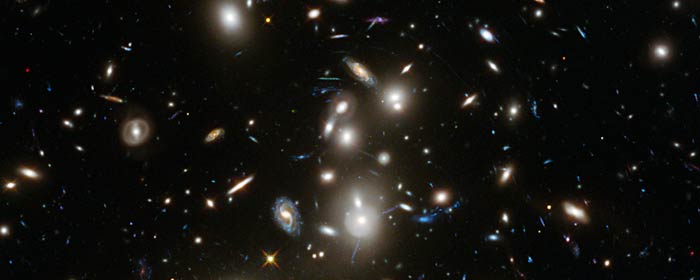Hubble Reveals Newly Detected Ancient Galaxies
January 8, 2014
Galaxies that had been too faint, small, and ancient to be seen by even the most powerful telescopes made their photo debut yesterday thanks to the Hubble Space Telescope and a strange and violent group of galaxies called Pandora’s Cluster. The images show the 58 galaxies as they appeared some 10 billion years ago, only 4 billion years after the Big Bang, the event that scientists believe created the universe. The newly detected galaxies, which are only several thousand light-years across, are about 100 times as faint as previously discovered ancient galaxies.

Abell 2744, nicknamed Pandora's Cluster, is thought to have a very violent history, having formed from a cosmic pile-up of multiple galaxy clusters. Photo courtesy of NASA.
The images were the first taken by Hubble’s new Frontier Fields program, a three-year survey of the ancient universe using ultraviolet light. Even so, the galaxies would have remained hidden without the magnification provided by Pandora’s Cluster, which lies between Earth and the galaxies. In a phenomenon known as gravitation lensing, the Pandora Cluster acted like a zoom lens. Its gravitational force “bent” the light from the galaxies, focusing and brightening it.
A second team of researchers used data from both Hubble and the Spitzer Space Telescope to estimate the mass of four different ancient galaxies for the first time. The four galaxies are only about 1 percent as massive and 1/20th as large as the Milky Way. But the four, which appear as they did 13.2 billion years ago, are much brighter than scientists had expected. The scientists suggested that the rapid formation of stars in these young galaxies accounts for their brightness.
Additional World Book articles:
- Astronomy
- Inflation theory
- Astronomy Through a Millennium (a special report)
- Seeing the Universe in a Different Light (a special report)
- The Universe on the Grand Scale (a special report)
- When Galaxies Collide (a special report)


